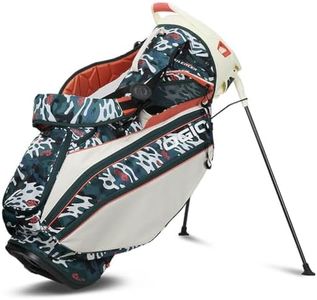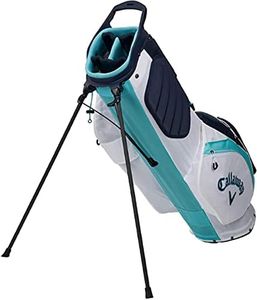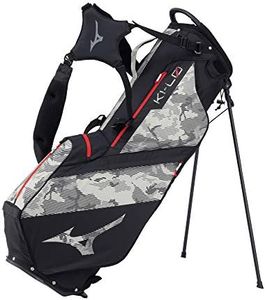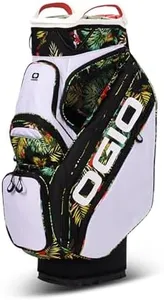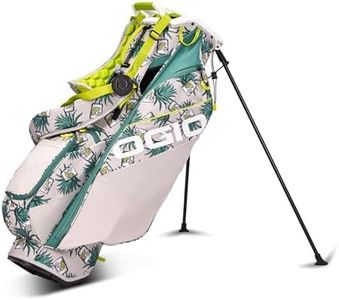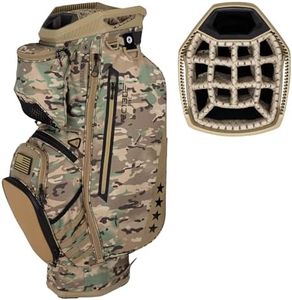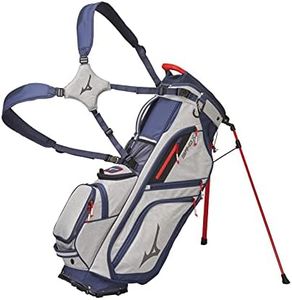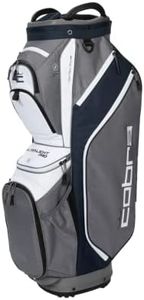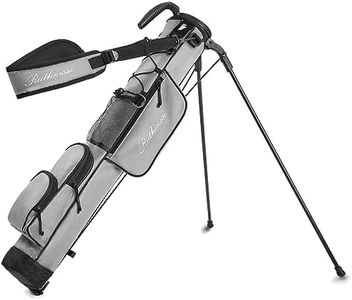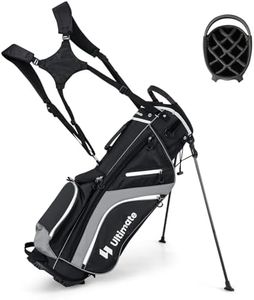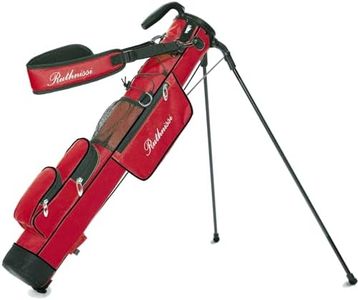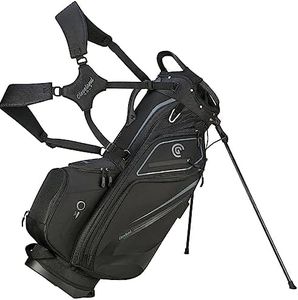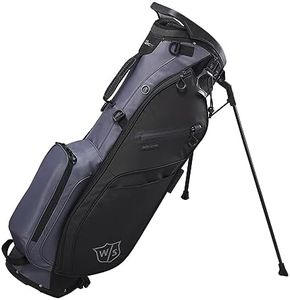We Use CookiesWe use cookies to enhance the security, performance,
functionality and for analytical and promotional activities. By continuing to browse this site you
are agreeing to our privacy policy
10 Best Lightweight Golf Bags
From leading brands and best sellers available on the web.Buying Guide for the Best Lightweight Golf Bags
Choosing the right lightweight golf bag is important because it can make your time on the course much more enjoyable and less tiring. A good lightweight golf bag means you can carry your clubs comfortably, stay organized, and even speed up your game. When picking the best fit, it’s key to think about how you’ll use the bag, what features matter to you, and what makes carrying and accessing your gear easy.WeightWeight refers to how heavy the bag is when it’s empty. This is one of the most crucial specs for a lightweight golf bag because a lighter bag will be easier to carry, especially over long rounds or if you walk instead of using a cart. Lightweight bags generally range from under 3 pounds to just over 5 pounds. If you walk the whole course often or want the easiest carrying experience, aim for a bag under 4 pounds. If you only walk occasionally, a 4-5 pound bag with a few extra features might be more comfortable for you. Think about how far and how often you carry your bag, and pick the lowest weight that still feels durable and useful for your style.
Carry Strap SystemThe carry strap system describes how the straps are designed for carrying the bag over your shoulders or back. Some bags have a single strap, while others use a dual (backpack-style) strap system. Single straps are simple but can put all the weight on one shoulder, while dual straps spread the weight and usually make carrying more comfortable. If you have back or shoulder issues, or if you carry your bag for many holes, look for well-padded dual straps. Try different styles if you can, and pick the one that feels secure and easy to adjust based on your carrying habits and comfort.
Number of DividersDividers are the sections at the top of the bag that separate your clubs. More dividers mean better club organization, making it easier to grab the right club and prevent damage from clubs clashing together. Lightweight golf bags often have anywhere from 2 to 5 dividers. If you want ultimate simplicity and shortest weight, fewer dividers are fine. If you value keeping clubs neatly organized and easy to access, go for 4 or 5 dividers. Consider how many clubs you usually carry and how important organization is for your enjoyment of the game.
Pockets and StorageThe number and type of pockets determine how much gear and accessories you can carry, like balls, tees, water bottles, or extra clothing. Lighter bags may have fewer or smaller pockets, while some manage to keep several pockets but with lightweight materials. If you pack minimal extras, a bag with just a couple pockets will suit you. If you like to bring snacks, weather gear, or extra accessories, pick a bag that manages to offer more storage while still being lightweight. Think about what you bring to the course and make sure the bag has enough easily accessible storage for your needs.
Stand MechanismMany lightweight bags come with built-in legs (a stand) that pop out so your bag stands up on its own. This is handy for quickly setting the bag down and grabbing clubs without bending over. Stands add a bit of weight, but good designs keep things light and stable. Simpler bags might skip the stand for the lowest possible weight. If you like to have your bag upright and accessible, choose a sturdy stand mechanism, but if you’re looking for absolute minimal weight and don’t mind laying your bag down, a stand-less bag might be for you. Your personal preference and how you play the course should guide this choice.
Material and DurabilityThe materials used in the bag affect its overall weight, durability, and sometimes water resistance. High-quality lightweight bags use durable but thin fabrics and reinforced stitching to cut weight without sacrificing strength. Some might offer waterproof or water-resistant features for extra protection. If you play often, especially in rough or wet conditions, look for tougher material and water resistance. If you play occasionally and mostly in good weather, prioritize lightweight and comfort. Think about your typical playing conditions and how rough you are on your gear to decide what level of durability is best.
